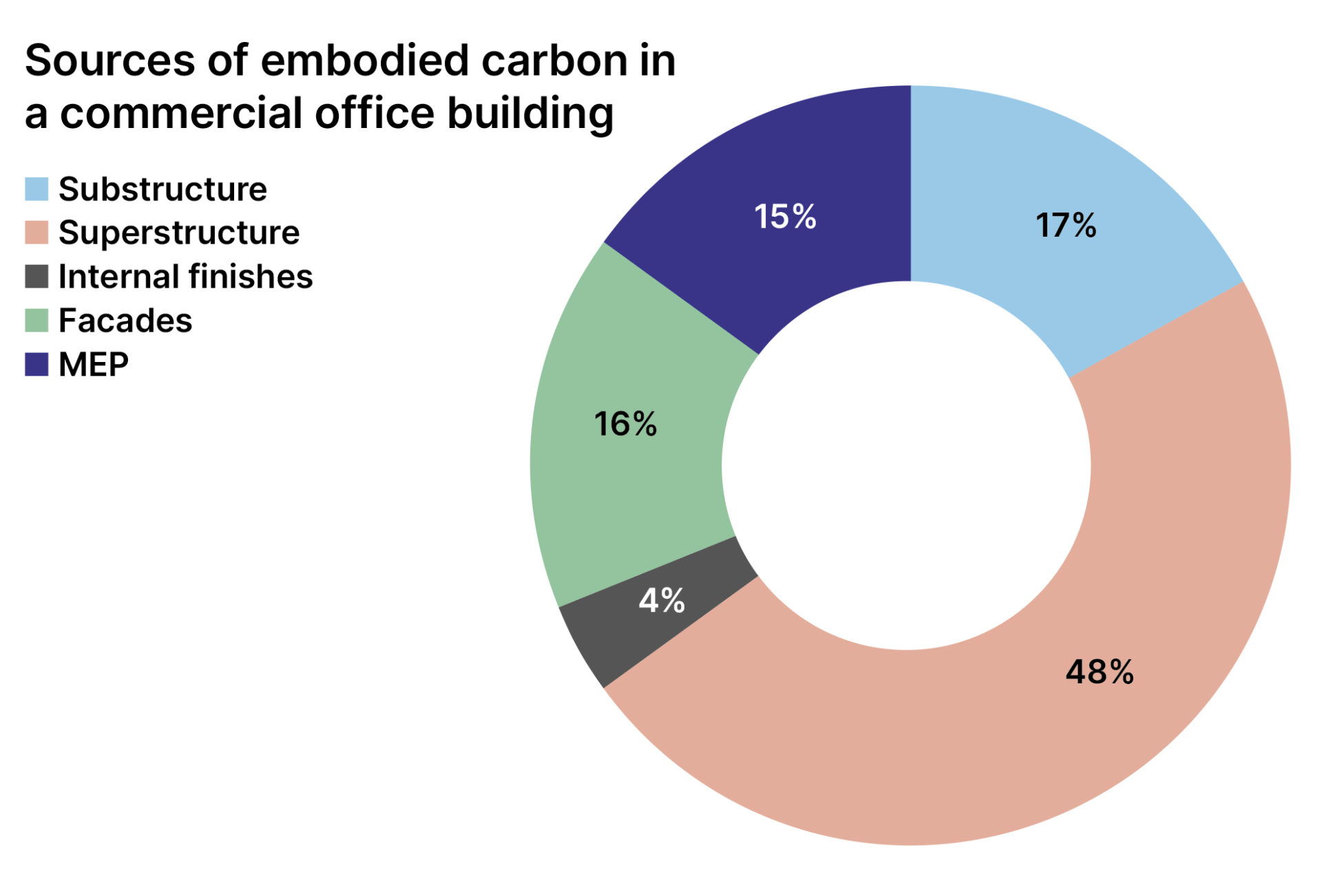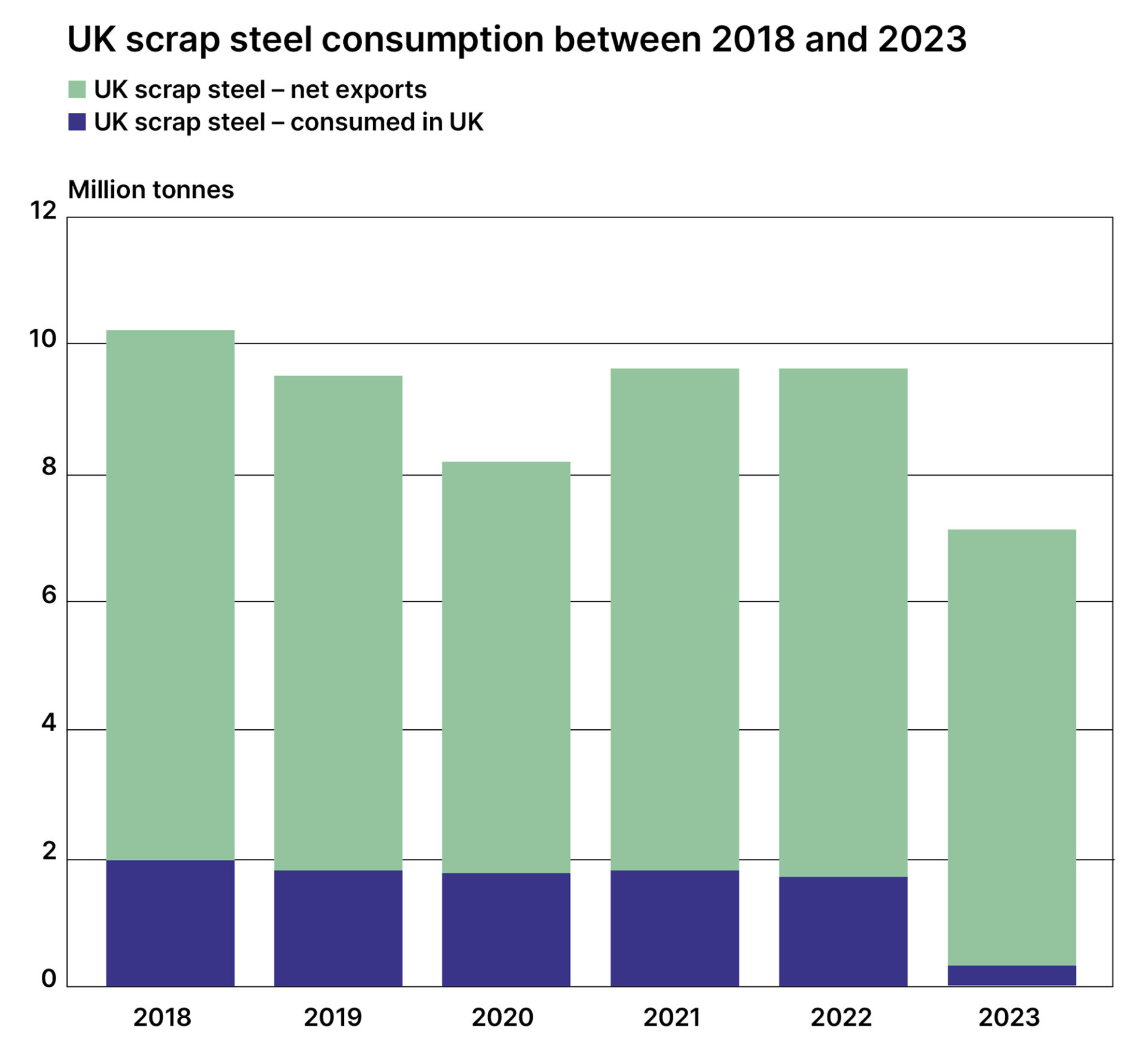
If the industry wants to embrace the circular economy, it must go beyond sustainability initiatives and adopt a restorative approach, writes Pablo Cristi Worm.
Ahead of the 2024 United Nations Climate Change Conference (COP29) in Baku this month, now may be a good time to shine a spotlight on the way the UK construction industry designs, procures, builds and disposes of our buildings.
According to the London Energy Transformation Initiative, a network of built environment professionals working to make London zero carbon by 2050, buildings are responsible for 49% of annual carbon emissions in the UK, with non-domestic buildings producing an average of 1,000kgCO2/m² of embodied carbon.
For instance, 48% of a commercial office building’s embodied carbon comes from the superstructure, while 17%, 16% and 15% originate from its substructure, facades and MEP, respectively. Equivalently, 48% of the embodied carbon in a commercial office project comes from materials and construction items, while 45% comes from maintenance and replacement.
The circular economy offers a solution to the environmental challenges posed by traditional linear models like the ‘take-make-waste’ approach by aiming to decouple economic growth from the consumption of finite resources.
To achieve circularity in the construction industry, designing buildings with easily disassembled and reusable components is crucial. Although this requires a rethinking of the current construction economic model, various approaches are moving in the right direction.
Sustainable alternatives
Steel is a prime example of a highly recyclable material. Structural steel from demolished buildings can be tested and reused in new developments with almost an infinite life cycle. According to UK Steel, the UK alone produces approximately 9-10 million metric tonnes of scrap steel annually, and consumption is expected to nearly triple by 2050.
The manufacturing process for steel is currently carbon intensive, but the introduction of new electric arc furnaces and other measures to improve the sustainability of steel production could make steel an appealing material for the circular economy.

Other materials are more challenging when it comes to reuse. Unlike steel, concrete is difficult to reuse due to its chemical composition. Cement, the primary ingredient in concrete, is produced through a high-energy process that releases significant amounts of CO2. CarbonCure, a Canadian manufacturer of sustainable concrete, estimates that cement manufacturing contributes to 7% of global carbon emissions and concrete accounts for 50 to 85% of the embodied carbon in buildings.
However, innovations in low-carbon concrete offer more sustainable alternatives. These materials reduce the carbon footprint while maintaining the performance of traditional concrete.

Reconsider concrete use
To embrace circularity, clients and architects may need to reconsider how concrete is used. For example, adopting a modern method of construction approach using modular or reusable blocks that can be deconstructed and used again when a project has reached the end of its life would represent a step in that direction.
While the circular economy contributes to a more sustainable society, it’s important to note that not all sustainability initiatives align with circular principles. For the construction industry to truly achieve circularity, it must adopt a restorative and regenerative approach. This involves shifting away from the linear economy, using renewable energy, eliminating toxic chemicals and designing materials and products for repair and reuse.
Pablo Cristi Worm is an associate economist at Turner & Townsend.











